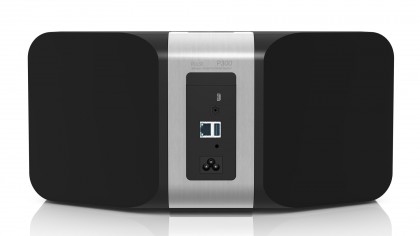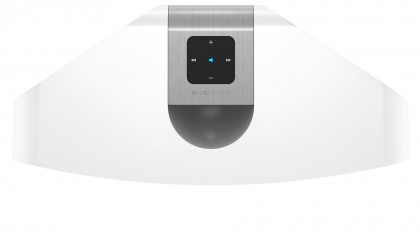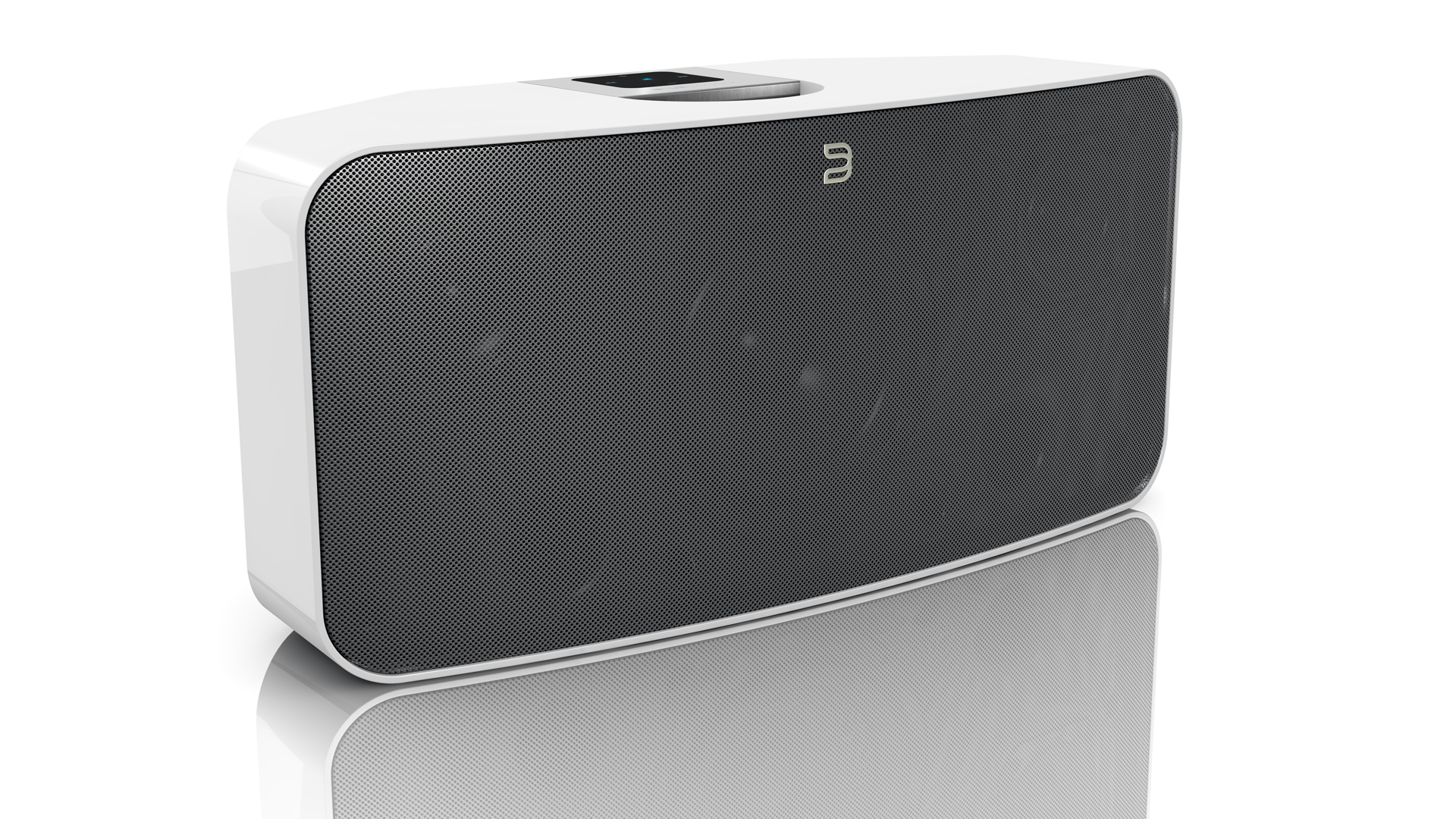TechRadar Verdict
The Pulse delivers hi-fi quality sound controlled in a simple and modern way. Its easy to set up, simple to use, looks good and is backed up by software that's constantly evolving and improving.
Pros
- +
Discreet stylish design
- +
Sounds amazing
- +
Easy to use
- +
Constantly evolving software
Cons
- -
Lack of connectivity
- -
No SoundCloud
- -
Struggles over wifi
- -
Doesn't come cheap
Why you can trust TechRadar
The Bluesound Pulse is an all in one wireless music system designed to play music not only from your tablet or phone, but also from one of the many other products in the Bluesound range.
These include the Node, the Powernode, and the Vault. It can play music stored on NAS drives or any computer on your network, and from several different online streaming services, such as Tunein radio, Last.fm, Rdio, Spotify and, most notably, Tidal, the CD-quality streaming service championed by Jay Zed.
The Pulse packs a high-end 35-bit/844kHz DAC to make the most of these high quality files. So, it's got the necessary audiophile chops, but does it live up to the job and that hefty £600 price tag?
The unit itself is a large, heavy wedge of glossy white (or black) plastic with a small touch button control panel on the top and a metal grill covering the whole of the front.
A discrete 'B' on the grill and the words Bluesound on the control panel are the only visible branding, and on the back is a socket for the power cord, an ethernet port, a digital optical input and a mini-USB socket.
It's fairly heavy, but the control panel doubles as a handle due to a recess underneath it which makes it easy to carry with one hand despite its weight.
It also comes with a massive white sack.
Sign up for breaking news, reviews, opinion, top tech deals, and more.
I guess that's just to give it that premium unboxing feel, as it offers no protection whatsoever and if anything makes it harder to carry. But if you want to give one as a present, then it could form part of a convincing Father Christmas impression…
It feels very well made and has a sleek, simple look that lets it sit discreetly on a shelf despite its size.

Simple setup
The Pulse is very easy to set up. You plug it in, it then creates a wireless network which you connect to from whatever device you are going to use to control it. Then it automatically opens up a web page which you use to connect the Pulse to your own home network.
Once this is done, the Pulse will always remember your network password even if you unplug it, so you can move it from room to room and it will be back up and running in seconds.
The Pulse is also designed to be left switched on all the time, and puts itself into a low power mode when not in use.
There are volume, next/previous track buttons and a multi-purpose middle button that mainly acts as a mute button on the control panel.
All other control of the unit is done from an app on either android or iOS, or from Windows and OSX applications.
Melting pot
The Bluesound app takes a little getting used to, as it takes a slightly different approach to other music apps.
Rather than clicking on a track to play it; clicking on a track in the Bluesound app adds it to a playlist from which you then chose what you want to play.
This seems really weird at first, but once you get used to the system it actually makes a lot of sense.
The idea is that you build a playlist from all of the music you have available, be it from your music collection, or from one of the many streaming services. Once you have a few of your favourite albums from Spotify, Tidal, and your iTunes library all together in one place you find yourself listening to music in a different way.
Rather than listening to streamed music in isolation or playing music exclusively from your own collection, it's all there mixed up together, and after while you stop paying attention to where the music is stored or streamed from and more attention to listening to it.
Although its great to have every track a band's ever written and links to all the bands their mates are in, it can be information overload - ever notice you don't listen to a whole track before your onto the next one, because it suddenly caught your eye from the 'also appears on' list?
OK, so some of the best music out there you'd never have found if it wasn't for being able to surf streaming sites in this way...
The Pulse also supports Spotify connect, so you can play music directly from the its app if you want to. Bluesound adds links to Tidal in your own music collection as well, so as long as they are on there you can check out what else your favourite artist has done in glorious high definition.

Sound Quality and performance
The Pulse sounds fantastic.
A pair of 2.5-inch tweeters and a 5-inch woofer, powered by an 80W Class D direct digital amplifier, developed by the people behind NAD, easily fill the room with warm, solid bass, tight punchy midrange and crisp, clear treble.
It has depth and detail, particularly when listening to CDs ripped to FLAC and streamed from the Bluesound Vault or CD-quality audio from Tidal. Spotify, set at its highest quality, sounds great too.
It does show up just how much lower bitrate files are indeed poorer quality - perhaps an issue if your entire collection is 128kbps MP3s.
You soon become fussy about quality once you can properly hear the difference.
The Pulse is plenty loud enough, and has such a good balance between the frequencies I rarely found myself needing to tweak the equalizer. There is one, which is refreshingly old school in it's bass +/- and treble +/- approach.
No 'deep/natural/rock/dance' nonsense presets here.
Another great feature is the ability to set maximum and minimum volume levels, giving greater sensitivity in the apps volume slider when listening at low volume.
The Pulse is quality hardware backed up by clever, constantly evolving software.
In the weeks I've been testing it there have been three firmware updates for the machine itself and numerous updates to the controller app.
I mainly used the app on my Android phone, and sometimes the iOS version on my iPad, and at first I noticed that the iOS version seemed slightly smoother, but that seems to no longer be the case since a recent update.
Being able to control playback from several different devices at once is really handy, and means if I roll in at all hours from the pub and put ridiculously loud music on my partner can simply use her phone to turn it down without even having to get out of bed and shout at me, and can even change the maximum level so I can't turn it back up again.
Winner.
